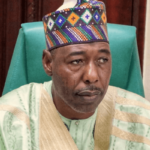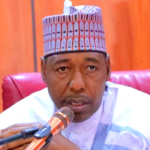Leaders from across Nigeria’s energy ecosystem have said Nigeria must prioritise policy stability, local manufacturing, structured financing, and inclusive innovation, to fast-track its energy transition.
They made the call at a high-level stakeholder engagement in Lagos, on Thursday, hosted by the Consumer Advocacy and Empowerment Foundation (CADEF) under the theme “Overcoming Barriers to a Sustainable Energy Transition.”
The forum spotlighted the structural and financial roadblocks hampering Nigeria’s shift toward renewable energy. Participants included government officials, financial sector leaders, academics, and clean energy specialists.
CADEF’s executive director, Professor Chiso Ndukwe-Okafor, set the tone, with discussion onDistributed Energy Resources (DER) platform, a comprehensive initiative offering Nigerian consumers tools, financial resources, and educational content to adopt decentralised renewable energy solutions. “Distributed energy resources—solar panels, battery systems, inverters—are lifelines. But affordability remains a major barrier. We’re building more than a platform; we’re building a movement toward equity in clean energy access,” she said.
Ndukwe-Okafor averred that, “This transition isn’t just technical—it’s social. It’s about power, in every sense of the word. And everyone deserves a share.”
Financial expert Adetola Adegbayi stressed the importance of collective investment structures and educational initiatives to attract long-term funding from pension and insurance sectors. “Formalised, community-driven investment models have worked globally. Nigeria must adopt them to unlock capital and scale,” she noted.
Lagos state is positioning itself as a national model for power reform. CEO of the Lagos State Electricity Agency (LSEA), Engr. Kamaldeen Abiodun Temitayo Balogun, outlined sweeping reforms under the Lagos State Electricity Law, stating that the state aims to decentralize power generation, build a competitive electricity market, and raise generation capacity to 3,000 megawatts, including 2,000 from gas-powered sources.
Balogun emphasized transparency and accountability through a smart grid and centralized payment system, noting that past inefficiencies led to uncollected revenues of ₦2–₦5 billion monthly. Under the new model, electricity distributors like Ikeja Electric and Eko Disco must meet strict Key Performance Indicators (KPIs) or risk being replaced by private investors.
Lagos’ strategy includes full metering from generation to end-users, rigorous compliance enforcement by the LSEA, and targeted investments to electrify schools, health centers, and underserved communities through dedicated education and post-community funds.
Concerns were raised during the panel discussion titled: “Public-Private Partnerships and International Collaborations Driving Renewable Energy Adoption
in Nigeria” about the country’s educational strategy. Stakeholders pushed back on the proliferation of specialised universities for renewable energy and artificial intelligence, urging instead for investment in upgrading existing institutions. “Don’t build more schools—modernize what we have. Embed innovation into current systems,” they advised.
Another major point of consensus was the need for policy continuity, as stakeholders criticised the recurring trend of abandoning existing development plans with every change in administration. “In China, five-year plans transcend political cycles. Nigeria must adopt a similar long-term approach,” they stated.
Information sharing also emerged as a major gap. Participants praised CADEF and platforms like DER platform for aggregating critical data and fostering stakeholder synergy. “Everyone is working, but in silos. We need to build bridges—of policy, purpose, and information,” they advised.
CADEF showcased its broader commitment to inclusion with initiatives like the Green Labs Innovation Program, digital finance training for persons with disabilities, and entrepreneurship projects for young women—all aimed at expanding participation in the green economy.
With Nigeria targeting 30 gigawatts of power by 2030—30 per cent of which should come from renewables—stakeholders agreed that grassroots empowerment, strategic financing, and consistent policies must guide the way forward.
We’ve got the edge. Get real-time reports, breaking scoops, and exclusive angles delivered straight to your phone. Don’t settle for stale news. Join LEADERSHIP NEWS on WhatsApp for 24/7 updates →









